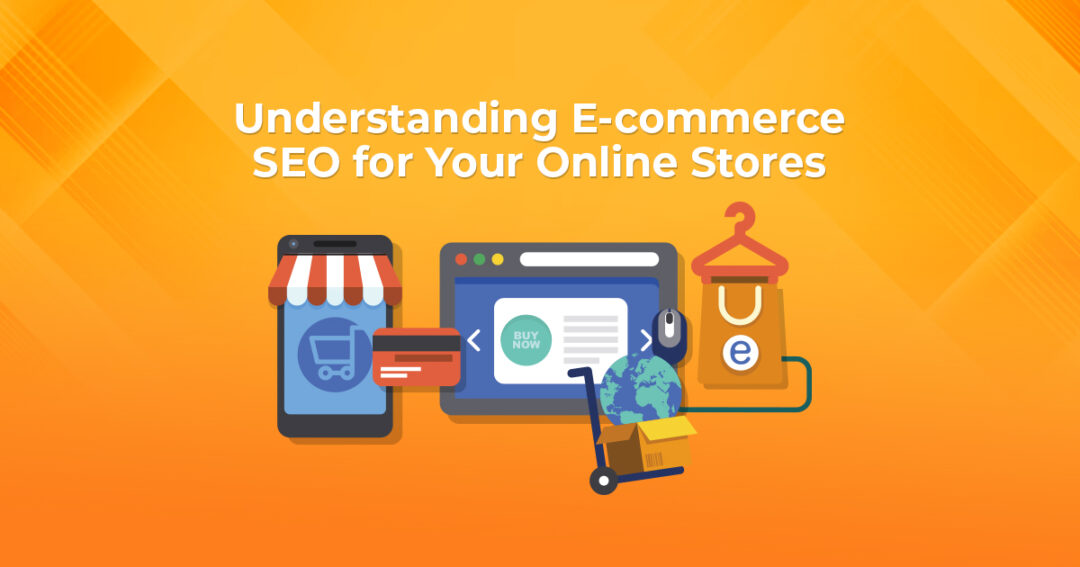Introduction
In today’s digital age, e-commerce has become a powerhouse in the business world. With millions of online stores vying for consumer attention, e-commerce businesses must have a solid online presence. One of the key strategies for achieving this is through Search Engine Optimization (SEO), and having a dedicated SEO specialist can make a significant difference. Understanding and implementing e-commerce SEO, with the help of an experienced SEO specialist, can significantly improve your online store’s visibility, traffic, and ultimately, sales. In this blog, we will explore the fundamentals of e-commerce SEO and provide valuable tips to help your online store thrive.
1. Keyword Research
Keyword research is the cornerstone of any effective SEO strategy. It involves identifying the terms and phrases potential customers use to search for products or services you offer. For e-commerce stores, conducting thorough keyword research is crucial for understanding your audience’s intent and optimizing your product listings accordingly.
Tips for effective keyword research:
– Use keyword research tools like Google Keyword Planner, SEMrush, or Ahrefs to find relevant keywords.
– Focus on long-tail keywords (specific, longer phrases) that are relevant to your products.
– Analyze your competitors’ keywords and identify gaps in your strategy.
– Monitor keyword trends to stay up-to-date with evolving consumer preferences.
2. On-Page SEO
Once you’ve identified your target keywords, it’s time to implement them throughout your online store. On-page SEO involves optimizing individual pages, including product listings, category pages, and blog posts, to rank higher in search engine results.
Key on-page SEO elements for e-commerce:
– Title Tags: Include your target keyword in the product title, making it descriptive and compelling.
– Meta Descriptions: Craft engaging meta descriptions that encourage users to click through to your page.
– Header Tags: Use header tags (H1, H2, H3) to structure your content and highlight important information.
– Image Optimization: Optimize product images with descriptive file names and alt tags.
– Product Descriptions: Write unique, informative, and engaging product descriptions that include keywords naturally.
3. Site Structure and Navigation
An organized and user-friendly website structure is essential for both SEO and user experience. Make sure your online store is easy to navigate, with clear categories, subcategories, and a logical hierarchy. This not only helps visitors find what they’re looking for but also makes it easier for search engines to crawl and index your site.
Tips for improving site structure:
– Create a clear and intuitive menu with dropdown options for product categories.
– Implement breadcrumbs to show visitors the path they’ve taken within your site.
– Use a sitemap to assist search engines in understanding your site’s structure.
4. Mobile Optimization
As more and more people shop on their mobile devices, mobile optimization is no longer optional—it’s a necessity. Google’s search algorithms now prioritize mobile-friendly websites, so ensuring that your online store is responsive and loads quickly on smartphones and tablets is vital.
Tips for mobile optimization:
– Choose a responsive design theme for your e-commerce platform.
– Test your website’s mobile-friendliness using Google’s Mobile-Friendly Test.
– Optimize images and minimize code to reduce page load times on mobile devices.
5. User Experience and Page Speed
A fast-loading website with an excellent user experience is not only beneficial for SEO but also crucial for keeping visitors on your site and converting them into customers. Slow-loading pages and a confusing navigation structure can drive potential customers away.
Tips for improving user experience and page speed:
– Compress images to reduce file sizes without compromising quality.
– Minimize HTTP requests by reducing the number of scripts and stylesheets.
– Use browser caching to store static resources and speed up page loading times.
6. Content Marketing
Content marketing is a powerful way to attract organic traffic and build authority in your niche. While product listings are essential, creating valuable content like blog posts, how-to guides, and product reviews can drive more visitors to your site and improve your overall SEO.
Content marketing tips:
– Identify topics that resonate with your target audience and align with your products.
– Write high-quality, well-researched content that provides real value to readers.
– Promote your content through social media, email marketing, and outreach to industry influencers.
7. Technical SEO
Technical SEO involves optimizing the backend of your website to improve its crawlability and indexability by search engines. It ensures that search engine bots can access and understand your site’s content.
Technical SEO considerations:
– Implement schema markup to provide search engines with structured data about your products.
– Create and submit an XML sitemap to search engines like Google.
– Regularly check for and fix broken links (404 errors) on your site.
8. Monitor and Analyze
SEO is an ongoing process, and it’s essential to monitor your performance regularly. Use tools like Google Analytics and Google Search Console to track your website’s traffic, rankings, and user behavior. Analyze the data to make informed decisions and continuously improve your e-commerce SEO strategy.
Conclusion
E-commerce SEO is a dynamic and ever-evolving field that requires dedication and continuous effort. By understanding the fundamentals of keyword research, on-page SEO, site structure, mobile optimization, user experience, content marketing, technical SEO, and regular monitoring, you can position your online store for success. A well-optimized e-commerce website not only attracts more organic traffic but also leads to higher conversions and increased revenue. Invest in SEO, and watch your online store thrive in the competitive world of e-commerce.


